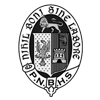What will I do in Taekwon-Do?
Our Style
The literal translation of Taekwon-Do is ‘the way of the foot and hand’. Tae is the Korean word for foot, while kwon means hand, and Do is the way.
Our style was established by General Choi Hong Hi (1918-2002) and his instructors in 1955.
We practise the 24 patterns of Chang Hon, which was the pen name of General Choi that he used for his calligraphy and books.
“The utmost purpose of Taekwon-Do is to eliminate fighting by discouraging the stronger’s oppression of the weaker with a power that must be based on humanity, justice, morality, wisdom and faith, thus helping to build a better and more peaceful world.”
General Choi Hong Hi
Our school is one of over 50 nation-wide member schools of International Taekwon-Do.
iTKD is affiliated to the International Taekwon-Do Federation which is based in Benidorm, Spain.
Fundamental Movements
As in military training, performing fundamental movements is like an individual soldier’s basic training.
Learning fundamental movements enables us to perform more complex skills such as sparring, patterns and self-defence.
Fundamental movements are classified into hand and foot techniques.
Bare hands and feet are used to perform defensive and attacking movements against multiple opponents.
We use our hands and feet to block, punch, strike, kick, thrust and throw.
Students are taught these fundamental movements from their very first lesson, and will spend many months or years perfecting them. This forms the basis of the art: perfecting the basic movements.
Patterns
Our club practises the 24 patterns as described by Chang Hon, which was the pen name of the founder of our style of Taekwon-Do, General Choi Hong Hi.
Patterns are combinations of fundamental movements that are designed to simulate self-defence in a variety of contexts against multiple imaginary opponents.
Students learn how to apply defensive and attacking movements while moving from one opponent to another. When practised often enough, patterns training will lead to students being able to defend themselves in real life self-defence situations in an unconsciously competent manner.
Each pattern is unique from all the others, and there is a progression of difficulty as students become more competent.
The military equivalent of doing patterns is like practising platoon tactics.
Beginner (White Belt) will learn these two fundamental exercises:
Saju Jirugi and Saju makgi
OTHER PATTERNS include:
Sparring
Once soldiers learn basic platoon tactics, they then begin to apply the skills in field exercises involving simulated combat situations.
In Taekwon-Do we call this sparring, where students apply fundamental movements and patterns to defend themselves against moving opponents.
There are different types of sparring which are offered to students according to their levels of experience. They include pre-arranged, semi-free, free, model and foot technique.
Students are taught free sparring gradually and safely with the implementation of our national sparring syllabus.
This ensures students learn sparring skills in a safe a fun environment.
Self-defence
Self-defence refers to a set of skills which students learn to defend themselves from one or more attackers, either armed or unarmed and in many different contexts.
In other words, it is how to react in a real situation. This not only includes physical techniques but also learning avoidance and deescalation techniques.
Sometimes the attack may be in the form of a grab, so students learn to respond by either making a direct attack to a vital spot, breaking a joint or releasing from the grab followed by a counter attack.
Self-defence is not only a physical response to an attack but also an attitude towards personal safety.
Physical violence should always be the last thing that happens in conflict, so our students are taught how to avoid in the first place.
If conflict is present then we teach our students the skills which can help them to de-escalate the tension and avoid physical violence.
Physical responses to conflict should never be taken lightly, as they can lead to ugly consequences such as medical procedures and retaliation.
Our students are also taught the important skills of how to recover from physical violence.







